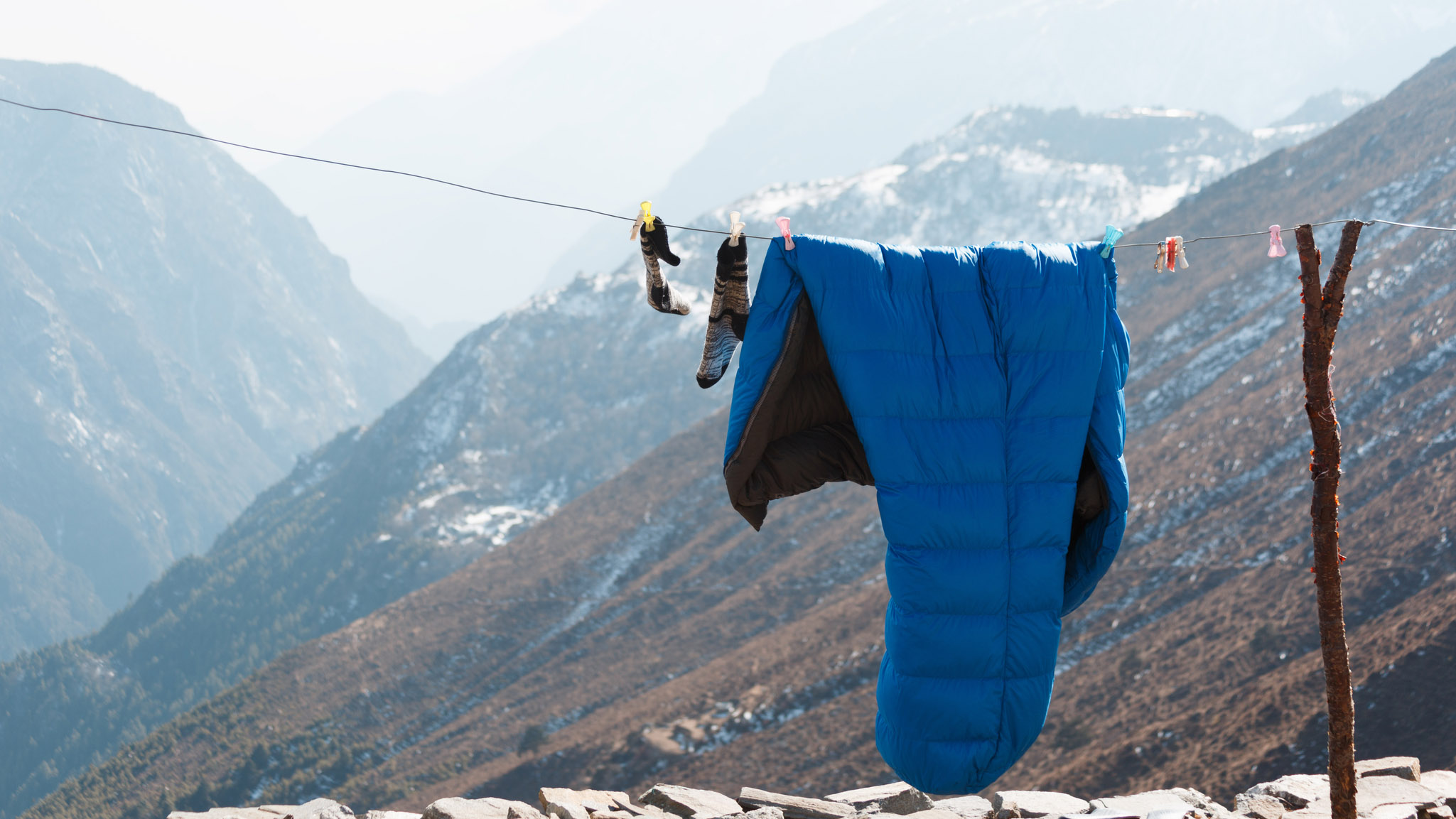How to store a sleeping bag: maximize your bag’s performance and its lifespan
Knowing how to store a sleeping bag properly will help you keep your bag in tip top condition, increase its lifespan and ensure it doesn’t let you down during your camping trips

Ever thought about how to store a sleeping bag properly? It’s not something most campers think about, yet every year thousands of bags make their way to sleeping bag heaven prematurely. This is not only bad for their owner’s wallets, but also bad for the environment. Fortunately, your sleeping bag’s lifespan can be extended greatly by learning how to store it correctly.
We’ve put together a step-by-step guide on how to store a sleeping bag, with everything from what to do when your return from your trip, tips on keeping your bag’s feathers evenly spread, other ways you can care for your bag and exactly how your sleeping bag should be stored.
Even the best sleeping bags need a bit of TLC to continue to deliver over several years. So, read on for our comprehensive guide.
How to store a sleeping bag: step-by-step instructions
Step 1: dry it out
When you return from a trip in the backcountry and your energy levels are low, it’s tempting to just toss your kit in the nearest available corner until next time around. Doing this with your sleeping bag, however, is one of the surest ways to impair its ability to perform when that next time comes around – and on all subsequent trips, too. No matter how dry the conditions you’ve done your camping in, your sleeping bag is sure to have some degree of moisture in the fabric – whether from condensation inside your tent or from sweat that’s seeped through the back of your backpack and into the sleeping bag’s stuff sack.
Storing your sleeping bag when it’s still damp is a bad idea for two reasons. First, it can lead to mold forming on the fabric, which could not only damage the fabric but also adversely affect your health (coughing, sneezing, wheezing, and even fever are the most common mold-induced health complaints). Secondly, dampness exacerbates the compression that reduces the bag’s loft and insulating capacity. When you get home from your trips, then, it’s well worth taking a minute to hang your bag up to dry. Ideally, this should be done over a line, with the zippers down, and in a spot where the bag won’t be exposed to contaminants or corrosives like tree sap, bird poo, or oil (if hanging in a shed or garage).

Step 2: air it out
Even if your bag isn’t damp, it’s a good idea to air it out after a trip – or even during the day when you’re on a multi-day trip. Doing so will help to free it of the funky odors that can accumulate over time and let the down feathers regain their loft (find out more about loft, and why it’s important, in how to choose a sleeping bag). While airing your bag out, be sure to open the zippers and, to freshen things up, you can also spray it down with a little Febreze or a similar fabric freshener.
Step 3: skip the stuff sack
At camp, it’s often tempting to return your sleeping bag to its stuff sack after each sleep as a means of freeing up floor space in your tent. However, the bottom line with sleeping bag care and maintenance is that the more time your bag spends inside its stuff sack, the less healthy it will be. This is because compact storage can damage the down feathers inside the bag, which causes them to lose the loft upon which our bags rely to provide insulation. For the same reason, leaving your bag inside the stuff sack for long periods at home is almost certain to hamper performance – the longer the bag remains bagged, the more its insulation capacity will decline.
All the latest inspiration, tips and guides to help you plan your next Advnture!
Step 4: fondle your feathers
When we sleep in our sleeping bags, our body weight can compress the feathers into little bundles within the baffles, and the same happens when it’s packed inside our backpacks. This clumping results in uneven distribution of insulation and can leave “cold spots” through which cold air can seep while we’re sleeping. The remedy? After using your bag, and before placing it in storage, fluff the feathers up by giving it a little shake and then spend five minutes kneading and massaging the material to work out any clumps and redistribute your down.

Step 5: let it hang!
Sleeping bags – like the best down jackets – are at their happiest when they’re hanging – as mentioned above, storing them any other way is liable to compress, condense, and even break the feathers that give them their loft, which can then impact their ability to insulate.
Hanging your bag up between uses lets the down plumes spread out and breathe, which helps them remain springy and voluminous. Ideally, you should hang your bag in a tall cupboard where it can hang freely, without touching the ground. Your hanging location should also be dry and not musty, dusty, or humid, which rules out most basements and lofts.
But how to store a sleeping bag if you’re short on storage space? If you don’t have a large cupboard or storage space, the next best option is to store your sleeping bag inside a large, breathable mesh or cotton storage bag (these are usually supplied when buying), and to keep this in the bottom of a cupboard, on top of a wardrobe, or anywhere else where the bag won’t be compressed or exposed to humidity.
How to store a sleeping bag: other care tips
You’re sleeping bag will undoubtedly get dirty over the course of its life, so it’s important to learn how to wash a sleeping bag correctly and how to reapply its DWR coating every once in a while. As well as this, knowing how to use a sleeping bag liner to keep your bag as clean as possible is also recommended.
Former Advnture editor Kieran is a climber, mountaineer, and author who divides his time between the Italian Alps, the US, and his native Scotland.
He has climbed a handful of 6000ers in the Himalayas, 4000ers in the Alps, 14ers in the US, and loves nothing more than a good long-distance wander in the wilderness. He climbs when he should be writing, writes when he should be sleeping, has fun always.
Kieran is the author of 'Climbing the Walls', an exploration of the mental health benefits of climbing, mountaineering, and the great outdoors.

